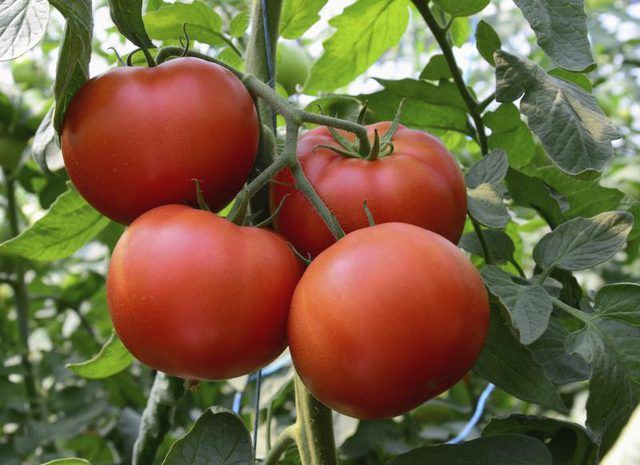Bulbs
Flower Basics
Flower Beds & Specialty Gardens
Flower Garden
Garden Furniture
Garden Gnomes
Garden Seeds
Garden Sheds
Garden Statues
Garden Tools & Supplies
Gardening Basics
Green & Organic
Groundcovers & Vines
Growing Annuals
Growing Basil
Growing Beans
Growing Berries
Growing Blueberries
Growing Cactus
Growing Corn
Growing Cotton
Growing Edibles
Growing Flowers
Growing Garlic
Growing Grapes
Growing Grass
Growing Herbs
Growing Jasmine
Growing Mint
Growing Mushrooms
Orchids
Growing Peanuts
Growing Perennials
Growing Plants
Growing Rosemary
Growing Roses
Growing Strawberries
Growing Sunflowers
Growing Thyme
Growing Tomatoes
Growing Tulips
Growing Vegetables
Herb Basics
Herb Garden
Indoor Growing
Landscaping Basics
Landscaping Patios
Landscaping Plants
Landscaping Shrubs
Landscaping Trees
Landscaping Walks & Pathways
Lawn Basics
Lawn Maintenance
Lawn Mowers
Lawn Ornaments
Lawn Planting
Lawn Tools
Outdoor Growing
Overall Landscape Planning
Pests, Weeds & Problems
Plant Basics
Rock Garden
Rose Garden
Shrubs
Soil
Specialty Gardens
Trees
Vegetable Garden
Yard Maintenance
How to Grow Large Beefsteak Tomatoes
How to Grow Large Beefsteak Tomatoes. Tomatoes (Lycopersicon esculentum) make a colorful, satisfying crop for a home vegetable garden, yielding fresh-tasting, luscious fruits. But if you'd like a tomato that can cover a sandwich or hamburger with a single slice, a type called beefsteak is tailor-made for you. This tomato needs care similar to other...

Tomatoes (Lycopersicon esculentum) make a colorful, satisfying crop for a home vegetable garden, yielding fresh-tasting, luscious fruits. But if you'd like a tomato that can cover a sandwich or hamburger with a single slice, a type called beefsteak is tailor-made for you. This tomato needs care similar to other varieties, naturally producing large, 1-pound fruits, but a bit of extra attention can result in especially huge, impressive tomatoes.
A Good Start
You can start beefsteak tomato plants by sowing seed indoors about eight weeks before your last frost date or purchase seedlings from a garden center when you're ready to plant. Either way, move seedlings outdoors when nighttime temperatures stay above 45 degrees Fahrenheit. But for extra-large tomatoes, start a bit earlier to extend the growing season, protecting seedlings from cold nights by covering each one with a vented, transparent plastic cover or surrounding it with a water-filled plastic product; both help retain daytime heat.
Plant seedlings in full sun, spacing plants at least 20 inches apart and setting them deeply so that several inches of the lower stem in buried -- this section sprouts roots for a strong plant. Add an inch or two of compost to the bottom of each hole, along with a handful of bonemeal for calcium and 1 teaspoon of Epsom salts for extra magnesium.
Watering and Feeding
Beefsteak tomato plants need regular moisture to grow well and produce solid, meaty tomatoes. Ensure they get at least 1 inch of water weekly, including rain -- a must for good fruit production. Once soil has warmed, mulch the plants with 2 or 3 inches of straw or shredded bark to conserve soil moisture and discourage weeds.
Proper fertilizing promotes heavy fruit set without overgrowth of greenery. When the first beefsteak fruits are about 1 inch in diameter, mix 1/2 cup of 5-10-5 fertilizer into soil next to each plant, using care not to disturb the roots. Water the fertilizer in well and repeat the feeding when you pick the first ripe fruit. Avoid high-nitrogen fertilizers that stimulate green growth, and don't use fresh manure, which can burn the roots.
Pruning and Staking
Beefsteak tomato plants are indeterminate, growing continuously all season long and getting taller. Pruning the plants to one or two strong stems helps keep their size under control. Also remove suckers that grow in the leaf axils, the points where leaves originate from stems. Support each plant with a sturdy stake driven into the ground or with a commercial cage; set both in place before planting, to prevent root damage.
To produce just a few extra-huge tomatoes on each plant, let only one stem grow per plant and pinch off all but one tomato from each cluster, allowing only a few tomatoes to stay on the plant. To prevent the plant from tipping, choose fruits on the lower parts of the plant, removing those higher up.
Other Care
Beefsteak tomatoes grow as annuals in all parts of the United States and are ready for picking about 70 to 85 days after planting, depending on the specific cultivar. When the end of summer nears, trim off the upper part of the plant that only has tiny, green tomatoes, funneling the plant's remaining energy into partly mature fruits lower on the plant. Disinfect your shears by wiping their blades with rubbing alcohol to prevent spread of disease.
Like all tomatoes, beefsteak types are susceptible to fungal problems. These are best prevented by spacing plants widely, watering plants at their bases to keep foliage dry and regularly clearing debris from under the plants. Possible insect pests include large, green tomato hornworm caterpillars and striped potato beetles -- hand-pick and destroy these. Control soft-bodied pests such as aphids and whiteflies by spraying plants until dripping wet with insecticidal soap, diluted at 5 tablespoons per gallon of water.